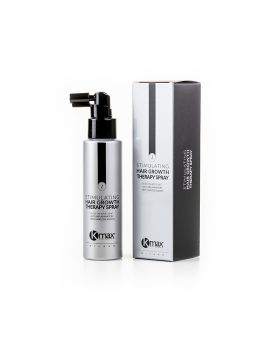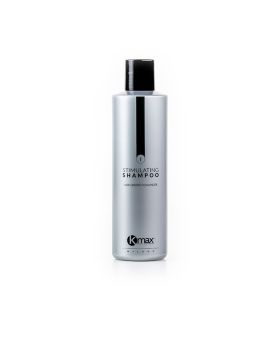Telogen effluvium: 7 symptoms to recognize it
Telogen effluvium: 7 symptoms to recognize it
Excessive hair loss? It could be telogen effluvium. Let's find out the main symptoms behind this disorder.
Telogen effluvium is a disorder that causes excessive hair loss. We talk about acute telogen effluvium when hair loss is copious and temporary. When, on the other hand, hair loss is more moderate but persistent over time, we can call it chronic telogen effluvium.
Learning to recognize the main symptoms of this phenomenon is essential to treat it in a targeted and effective way. Here, then, are the symptoms you may encounter if you are facing telogen effluvium.
1. Profuse hair loss: but how much?
Losing hair is a natural biological phenomenon. In fact, an average of 50 to 100 hairs fall out every day based on the amount of hair follicles that are active. This range varies according to age, sex (males tend to lose more hair than women during the day) and personal health.
With the term telogen effluvium, however, we refer to an abnormal hair loss both in terms of quality and quantity, which is decidedly higher than the natural daily average loss. Often, this more abundant hair loss coincides with the seasonal change and, therefore, is more frequent in autumn and spring.
2. The hair falls out with a white ball
In addition to the amount of hair that falls out, it is imperative to pay attention to the appearance of the hair in telogen. They, in fact, have a white ball at the base, a feature that can increase our worries. Instead, it is a distinctive trait of hair in the resting phase of the hair growth cycle.
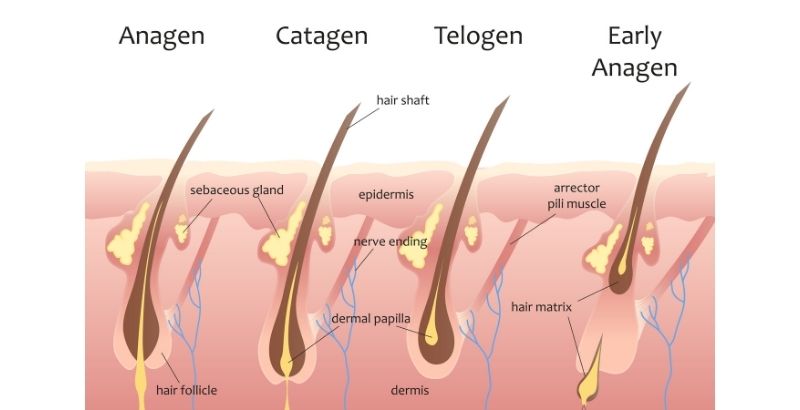
All hair follicles have their own life cycle, which is characterized by a phase of growth (anagen), of stopping the vital functions (catagen) and of rest (telogen). When the follicles are in the resting phase, we talk about "telogen hair" and they don’t produce any hair fibers. This is why it is completely normal for telogen hair, being deprived of vital functions, to fall out causing the telogen effluvium.
3. Telogen effluvium duration
Such abundant hair loss raises concern and, for this reason, it is no coincidence that among the most frequently asked questions of those who face this disorder there is: "But how long does telogen effluvium last?".
To answer this question, it is necessary to deepen the distinction between acute and chronic telogen effluvium that we mentioned at the beginning of this article. Chronic telogen effluvium, in fact, represents the most persistent and lasting form of this phenomenon.
On the other hand, when telogen effluvium, as it happens in most cases, is associated with the season change, it usually resolves on its own within a few weeks.
Simplifying, we can say that telogen effluvium has an average duration that varies between two or three weeks and a couple of months. However, in the event that the hair loss is excessively abundant or lasts for too long, it is advisable to consult an expert who is able to diagnose the origin of the problem.
4. More hair thinning
Hair thinning is another symptom of telogen effluvium, as it is nothing more than the direct consequence of profuse hair loss. A healthy individual, in fact, has on average 90% of hair follicles in the anagen phase (growth), while only 10% are in the telogen phase.
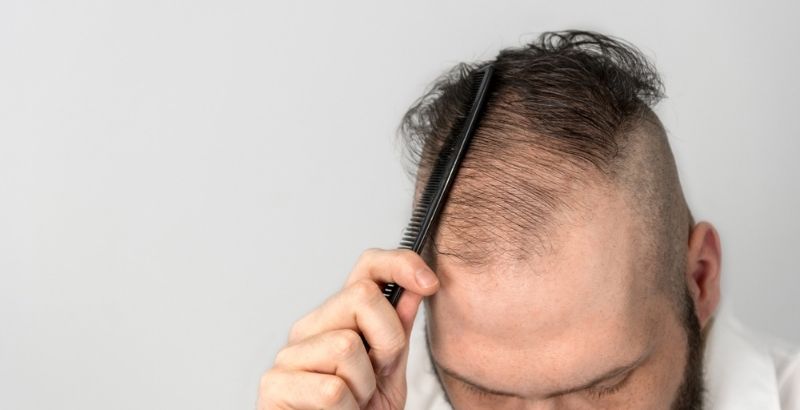
When the latter percentage increases exponentially, hair loss increases until there is widespread thinning on the scalp. Consequently, the more aggressive the telogen effluvium, the greater the hair thinning will be.
In these cases, choosing specific hair products can make a difference by stopping hair loss before thinning becomes excessively noticeable, and by promoting hair regrowth after effluvium. The Kmax Stimulating line is ideal against telogen effluvium, as it has been specially designed with the best anti-hair loss and stimulating active ingredients, such as triaminodil, beta-sitosterol, azelaic acid and B vitamins. Cleanser, conditioner and spray lotions of this line have been formulated with the aim of acting directly on the metabolism of the hair follicle by blocking the hair fall and stimulating the normal regrowth cycle.
5. Telogen effluvium and dull hair
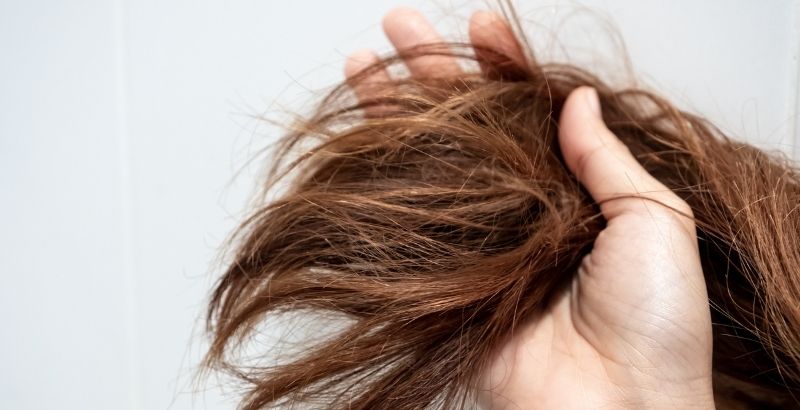
In addition to falling out, hair affected by telogen effluvium also appears duller and drier. This is because the hair health and its nice appearance go hand in hand. Therefore, during these weeks, it is normal to notice greater dryness and less brightness of the hair.
To regain softness and brightness, the best product is the hair conditioner. After shampooing, it restores the hydration and light that the hair needs to look beautiful and healthy. The ideal would be to use a conditioner such as Kmax Stimulating Leave-In Conditioner, as it combines nutritional properties with a strong anti-hair loss and stimulating action. Furthermore, it is non-rinsing: so the active ingredients present in its formulation can act in an intensified and prolonged manner.

6. Changes in color
After a long exposure to sunlight, as it happens in summer, the hair can change color in a natural way. The appearance of these reflections, usually red or blond, is a consequence of solar damage. After the summer, therefore, the hair tends to be more fragile and damaged, two characteristics that contribute to the onset of telogen effluvium.
To reduce the effects of imminent seasonal hair loss, it is essential to take care of your hair in the right way, especially after the summer season. In this recent article we talked about the best remedies for damaged hair after the summer.
7. Telogen effluvium causes: some external factors
The last symptom to pay attention to is a set of multiple factors that can cause telogen effluvium. In fact, factors like food deficiencies, hormonal disorders or excessively stressful periods can be hidden behind this problem. Even taking specific medications or undergoing certain surgeries can cause the abundant hair loss typical of telogen effluvium.

So, when you start noticing excessive hair loss, it is important to ask yourself if your diet is sufficiently varied.
In parallel, hair loss is often related to a high level of stress: in these cases, the hair loss can occur up to three months after the stressful period.
In conclusion
Learning the main symptoms that distinguish telogen effluvium is essential both to treat it effectively and to avoid confusing it with other disorders, such as androgenetic alopecia. If you want to learn more, in this other article you can find everything you need to know about effluvium and how to stimulate hair regrowth.
Stay up to date!
Minoxidil and Kmax hair fibers:
find out how to combine them to fight
hair thinning.



